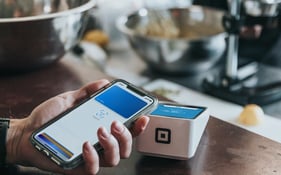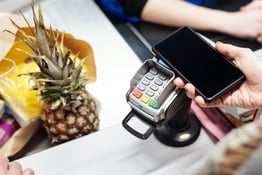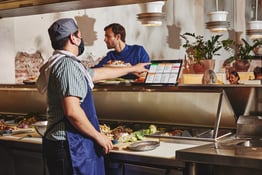We created this guide to share the various options available for off-premise—digital ordering, takeout and delivery—in order to help create and maximize this stream of revenue for operators during this time and into the future.
In this guide, you'll find:
-
A breakdown of common off-premise options
-
An overview of third-party delivery options
-
Notes on off-premise menu optimization, packaging, staffing, and more
Some common off-premise options
Whether your restaurant is entirely new to third-party delivery and takeout offerings, or simply looking to optimize the system you already have place, this guide will get you up to speed on the types of tech restaurants are leveraging to make sales outside their brick-and-mortar operations.
This being real life, and real life being imperfect, each of these off-premise approaches has its pros and cons. To wit!
Third-party delivery apps: This strategy is best for independent restaurants looking for a close-to-turnkey solution to get their off-premise operations on-line ASAP.
-
Pros: High consumer traffic; fast on-boarding process; no monthly software fee; ability to market via vendor platform
-
Cons: Comparatively high transaction fees; operators do not own the consumer relationship or data; management of multiple devices
White-label delivery management software: Larger enterprise restaurants that already know how to market to their existing customer base may be better served with this option.
-
Pros: More control over online look and feel; drives digital traffic to your own website and mobile application; lower cost per transaction
-
Cons: More on-boarding; monthly platform fees; marketing responsibility falls more to operator
Operator-built delivery systems: Historically used by independent fast-casual restaurants with consistent demand (think: neighborhood pizza parlors) to directly service customers.
-
Pros: Control over every aspect of the ordering process; no monthly fees; guarantee that product will be handled/delivered with care by own personnel
-
Cons: Higher upfront costs; more administrative management (hiring drivers, setting delivery hours, etc.); in-house platform/system maintenance
Choosing a third-party delivery app for your restaurant
Don’t spin your wheels researching the pricing minutiae of individual apps. Choose based on where your customers are spending their time.
Pricing is variable for third party delivery companies based on a number of factors like number of locations, existing customer data, and exclusivity. For any given platform, operators may see transaction fee’s between ~15-30% per order. On the receiving end, consumers will experience a ~30-90% upcharge for their meal due to service, delivery and other “misc fees”.
Many third-party delivery platforms have waived setup fees and/or have significantly reduced their commission percentage in response to the COVID-19 crisis.
Pro tip: If your priority is getting off-premise up and running fast, platforms with major marketshare (DoorDash, GrubHub, Uber Eats) are typically more turnkey.
Managing multiple third-party delivery solutions can be a heavy lift and operationally cumbersome. Consider "middle-ware" solutions like Chowly, that aggregate these platforms in a dashboard that sits on top of your POS.
Off-premise menu, packaging, and layout considerations
The pandemic is extraordinary, so business as usual simply won't cut it. Key areas for adjustment as your restaurant rethinks its off-premise approach include:
Menus: Quality over quantity is the motto (or should be, at least) for your off-premise menu. Assess your existing menu and decide which dishes translate best for a to-go scenario. Consider some of the following questions to help hone your off-premise menu:
-
What menu items are the crowd favorites you’re known for?
-
What are your most profitable menu items?
-
Can your culinary/back-of-house team produce the dish efficiently without compromising quality (even during peak hours)?
-
Will it travel well?
-
Are there new off-premise menu specials that you could offer that are on brand?
Packaging: Sending food out into the world comes with its own challenges, and making sure it's properly packaged is vital to protecting quality and ensuring customer satisfaction. So don’t skimp on packaging! Some ideas...:
-
Switching from polystyrene foam clamshells to more breathable materials like cardboard or paper allow more moisture to escape in transit, rather than bathing your food in steam en route.
-
Speaking of moisture, keep hot food like burgers and gyros loosely wrapped to avoid making bread components soggy.
-
Or, separate those ingredients entirely to keep meals fresh, allowing customers to assemble at home. (Same goes for sauces and broths that can be poured over the main dish upon arrival!)
-
Be deliberate about the statement your packaging makes. Consider custom-branded containers or stickers to make lasting impressions on first-time customers even though they've never experience on-premise dining at your restaurant.
Layout: When reorienting your restaurant for more off-premise sales, or exclusively off-premise sales, consider reconfiguring your physical space accordingly. After all, if your service is different, your dining room probably needs to be, too! Consider:
-
Creating designated areas for third-party drivers to pick up orders.
-
Having designated order preparation staff in your BOH during peak times to prep, track and hand-off takeout orders.
-
Carving out some space to store orders after they're prepared. Consider shelving to support higher volume and create a system (for example: the alphabet!) to make orders easier to find.





